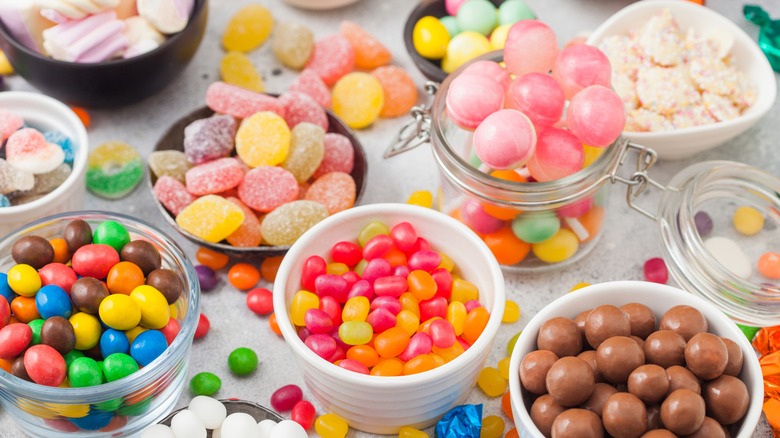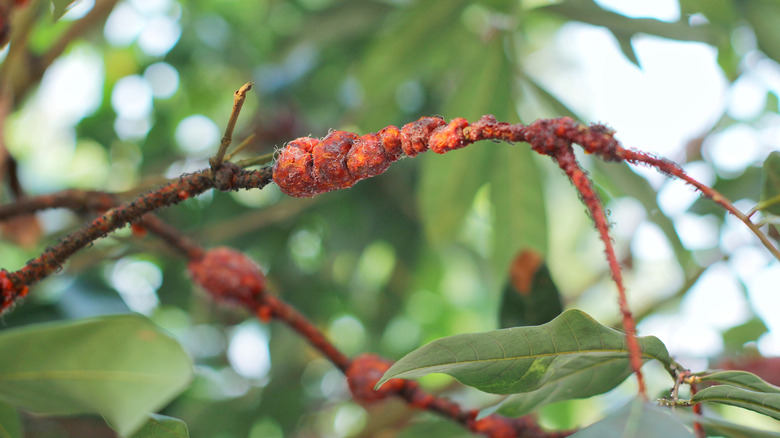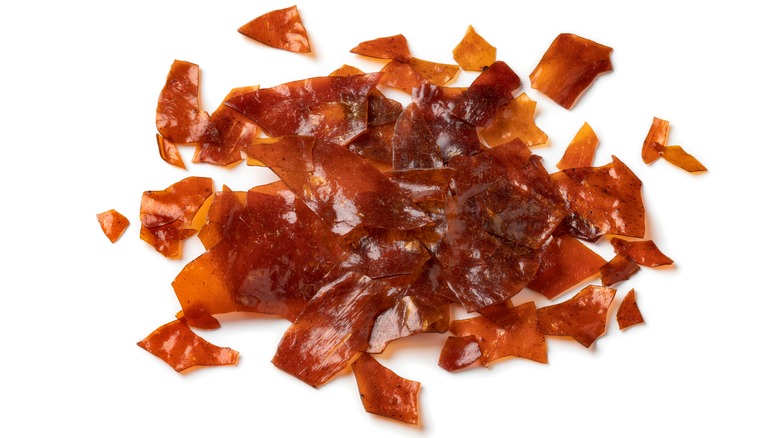The Secret You Never Realized About Candy Shells
There are a few reasons to put candy in shells. Sometimes, it's about aesthetics. For example, per Atlas Obscura, in the mid-20th century, the French poured hot caramel and fruit syrup into real seashells taken from the beach, leaving the nautical confections to harden before licking them like lollipops. Keep in mind, however, that those shells, covered in sand and brine, all came from living creatures. In retrospect, "Roudoudous," as they were called, were actually somewhat gross, which explains why plastic shells are now used instead.
That's not the secret that most candy shells are hiding, though. No, we're talking about the kind of shell you find on "melt in your mouth, not your hand" M&M's. Strides are currently being made with heat-resistant chocolate, but for a lot of candy, we still need a hard shell to protect the soft, sugary center. As Tim Bryant, president of food-coating supplier Temuss Products Ltd., explains, these candy shells can be achieved through sugar panning (via LinkedIn). This process can take three different forms: soft panning for products like jelly beans, hard panning for things like M&Ms, and chocolate panning for stuff like chocolate-covered peanuts. That doesn't sound too outlandish, does it?
Well, there's one other aspect to present-day candy shells that may shock you!
Shellac resin comes from bugs
Sugar isn't the only thing used to coat candy. Per the Encyclopedia Britannica, there's a type of commercial resin called shellac, which is soft and liquidy when hot, but hard and solid at room temp. It's used in all sorts of products from cement, felt hats, and hairspray to phonograph records, varnish, and wax. Shellac is also used in candy shells, according to Scientific American. So, where does such a versatile material come from? A little bug called the Indian lac insect secretes it.
The Laccifer lacca, as its scientifically known, belongs to the Kerriidae family (via Scale Net). These Kerriidae scale bugs, as noted by ID Tools, congregate on wooden sticks, covering their bodies in resinous secretions. While this insect family can be found all over the world, the Laccifer lacca is found in tropical and subtropical parts of countries like India, Myanmar, and Thailand. Twice a year, this lac resin is collected from twigs where the Indian lac insects suck sap and, as mentioned by Gentle World, make their breeding cocoons. When branches get crushed and strained to collect the lac, there may even be some other beetle juices left in the mix.
Pretty appetizing, right?
Lots of foods use shellac
What sort of candies owe their shells to lacs? As noted by Gentle World, if you see food additive number E904 on the packaging, that means it has shellac. You may also see "candy glaze," "confectioner's glaze," "confectioner's resin," "natural glaze," "pure food glaze," or "resinous glaze" listed instead, but those probably mean the exact same thing.
Candy-covered nuts and raisins are common examples of this trend, as are Whoppers, per Scientific American, as well as chocolate mints and jelly beans, according to the Office for Science and Society. Candy is not shellac's only culinary recipient, though. Shellac is also put on coffee beans, fruit, ice cream cones, medicine, and vitamins, too. Lac dye, a similar product from the same bug, can also be found in jams, juices, sauces, sodas, and wines — oh, and again, candy.
If you're vegan or just don't feel like eating insect secretions, there is a corn-protein alternative to shellac that's called "Zein." Confusingly, this can also be labeled "confectioner's glaze," so you might have to ask a business directly to find out what's actually in their product. For what it's worth, studies have shown shellac is safe to eat. Now that you know the secret, though, we'll leave that decision up to you.


